Why IGBT is very popular nowadays?
- Lower hate requirements
- Lower switching losses
- Smaller snubber circuit requirements
What are the different methods to turn on the thyristor?
- Forward voltage triggering
- Gate triggering
- dv/dt triggering
- Temperature triggering
- Light triggering
What is the difference between power diode and signal diode?

IGBT is a voltage controlled device. Why?
Because the controlling parameter is gate-emitter voltage
Power MOSFET is a voltage controlled device. Why?
Because the output (drain) current can be controlled by gate source voltage
Power BJT is a current controlled device. Why?
Because the output (collector) current can be controlled by base current.
What is the relation between α and β?

What are the different types of power MOSFET?
- N-channel MOSFET
- P-channel MOSFET
How can a thyristor turned off?
A thyristor can be turned off by making the current flowing through it to zero.
Define latching current.
The latching current is defined as the minimum value of anode current which it must attain during turn on process to maintain conduction when gate signal is removed.
Define holding current.
The holding current is defined as the minimum value of anode current below which it must fall to for turning off the thyristor.
What is a snubber circuit?
It consists of a series combination of a resistor and a capacitor in parallel with the thyristors. It is mainly used for dv / dt protection.
Take Power Electronic Tests : Top 1000 Power Electronics Online Tests
What losses occur in a thyristor during working conditions?
- Forward conduction losses
- Loss due to leakage current during forward and reverse blocking.
- Switching losses at turn-on and turn-off.
- Gate triggering loss.
Define hard-driving or over-driving.
When gate current is several times higher than the minimum gate current required, a thyristor is said to be hard-fired or over-driven. Hard-firing of a thyristor reduces its turn-on time and enhances its di/dt capability.
Define circuit turn off time.
It is defined as the time during which a reverse voltage is applied across the thyristor during its commutation process.
Why circuit turn off time should be greater than the thyristor turn-off time?
Circuit turn off time should be greater than the thyristor turn-off time for reliable turn-off, otherwise the device may turn-on at an undesired instant, a process called commutation failure.
What is the turn-off time for converter grade SCRs and inverter grade SCRs?
Turn-off time for converter grade SCRs is 50 – 100 ms turn-off time for converter grade SCRs and inverter grade SCRs and for inverter grade SCRs is 3 – 50 ms.
What are the advantages of GTO over SCR?
- Elimination of commutation of commutating components in forced commutation, resulting in reduction in cost, weight and volume.
- Reduction in acoustic noise and electromagnetic noise due to elimination of commutation chokes.
- Faster turn-off, permitting high switching frequencies.
- Improved efficiency of the converters.
What is meant by phase controlled rectifier?
It converts fixed ac voltage into variable dc voltage.
Mention some of the applications of controlled rectifier.
- Steel rolling mills, printing press, textile mills and paper mills employing dc motor drives.
- DC traction
- Electro chemical and electro-metallurgical process
- Portable hand tool drives
- Magnet power supplies
- HVDC transmission system
What is the function of freewheeling diodes in controlled rectifier? It serves two process.
- It prevents the output voltage from becoming negative.
- The load current is transferred from the main thyristors to the freewheeling diode, thereby allowing all of its thyristors to regain their blocking states.
What are the advantages of freewheeling diodes in a controlled in a controlled rectifier?
- Input power factor is improved.
- Load current waveform is improved and thus the load performance is better.
What is meant by delay angle?
The delay angle is defined as the angle between the zero crossing of the input voltage and the instant the thyristor is fired.
What are the advantages of single phase bridge converter over single phase mid-point converter?
- SCRs are subjected to a peak-inverse voltage of 2Vm in a fully controlled bridge rectifier. Hence for same voltage and currnt ratings of SCrs, power handled by mid-point configuration is about
- In mid-point converter, each secondary winding should be able to supply the load power. As such, the transformer rating in mid-point converter is double the load rating.
What is commutation angle or overlap angle?
The commutation period when outgoing and incoming thyristors are conducting is known as overlap period. The angular period, when both devices share conduction is known as the commutation angle or overlap angle.
What are the different methods of firing circuits for line commutated converter?
- UJT firing circuit.
- The cosine wave crossing pulse timing control.
- Digital firing schemes.
Give an expression for average voltage of single phase semiconverters.
Average output voltage Vdc = (Vm / π) (1 + cos α ).
What is meant by input power factor in controlled rectifier?
The input power factor is defined as the ratio of the total mean input power to the total RMS input volt-amperes.
PF = ( V1 I1 cos φ1 ) / ( Vrms Irms) where V1 = phase voltage, I1 = fundamental component of the supply current, φ1 = input displacement angle, Irms = supply rms current.
What are the advantages of six pulse converter?
- Commutation is made simple.
- Distortion on the ac side is reduced due to the reduction in lower order harmonics.
- Inductance reduced in series is considerably reduced.
What is meant by commutation?
It is the process of changing the direction of current flow in a particular path of the circuit. This process is used in thyristors for turning it off.
What are the types of commutation?
- Natural commutation
- Forced commutation
What is meant by natural commutation?
Here the current flowing through the thyristor goes through a natural zero and enable the thyristor to turn off.
What is meant by forced commutation?
In this commutation, the current flowing through the thyristor is forced to become zero by external circuitry.
What is meant by dc chopper?
A dc chopper is a high speed static switch used to obtain variable dc voltage from a constant dc voltage.
What are the applications of dc chopper?
- Battery operated vehicles
- Traction motor control in electric traction
- Trolly cars
- Marine hoists
- Mine haulers
- Electric braking.
What are the applications of dc chopper?
Chopper provides
- High efficiency
- Smooth acceleration
- Fast dynamic response
- Regeneration
What is meant by step-up and step-down chopper?
In a step- down chopper or Buck converter, the average output voltage is less than the input voltage. In a step- up chopper or Boost converter, the average output voltage is more than the input voltage.
Write down the expression for average output voltage for step down chopper.
Average output voltage for step down chopper V0 = α Vs, α is the duty cycle
Write down the expression for average output voltage for step up chopper
Average output voltage for step down chopper V0 = Vs/(1-α) here α is the duty cycle
What is meant by duty-cycle?
Duty cycle is defined as the ratio of the on time of the chopper to the total time period of the chopper. It is denoted by α.
What are the two types of control strategies?
- Time Ratio Control (TRC)
- Current Limit Control method (CLC)
What is meant by TRC?
In TRC, the value of Ton / T is varied in order to change the average output voltage.
What are the two types of TRC?
- Constant frequency control
- Variable frequency control
What is meant by FM control in a dc chopper?
In frequency modulation control, the chopping frequency f (or the chopping period T) is varied. Here two controls are possible.
- On-time Ton is kept constant
- Off period Toff is kept constant.
What is meant by PWM control in dc chopper?
In this control method, the on time Ton is varied but chopping frequency is kept constant. The width of the pulse is varied and hence this type of control is known as Pulse Width Modulation (PWM).
Write down the expression for the average output voltage for step down and step up chopper.
Average output voltage for step down chopper is VO = α VS. Average output voltage for step up chopper is VO = α VS x [1/ ( 1- α )].
What are the different types of chopper with respect to commutation process?
- Voltage commutated chopper.
- Current commutated chopper.
- Load commutated chopper.
What is meant by voltage commutation?
In this process, a charged capacitor momentarily reverse biases the conducting thyristor and turn it off.
What is meant by current commutation?
In this process, a current pulse is made to flow in the reverse direction through the conducting thyristor and when the net thyristor current becomes zero, it is turned off.
What is meant by load commutation?
In this process, the load current flowing through the thyristor either becomes zero or is transferred to another device from the conducting thyristor.
What are the advantages of current commutated chopper?
- The capacitor always remains charged with the correct polarity.
- Commutation is reliable as load current is less than the peak commutation current ICP.
- The auxiliary thyristor TA is naturally commutated as its current passes through zero value.
What are the advantages of load commutated chopper?
- Commutating inductor is not required.
- It is capable of commutating any amount of load current.
- It can work at high frequencies in the order of kHz.
- Filtering requirements are minimal.
What are the disadvantages of load commutated chopper?
- For high power applications, efficiency becomes very low because of high switching losses at high operating frequencies.
- Freewheeling diode is subjected to twice the supply voltage.
- Peak load voltage is equal to twice the supply voltage.
- The commutating capacitor has to carry full load current at a frequency of half chopping frequency.
- One thyristor pair should be turned-on only when the other pair is commutated. This can be realized by sensing the capacitor current that is alternating.
What is meant by inverter?
A device that converts dc power into ac power at desired output voltage and frequency is called an inverter.
What are the applications of an inverter?
- Adjustable speed drives
- Induction heating
- Stand-by aircraft power supplies
- UPS
- HVDC transmission
What are the main classification of inverter?
- Voltage Source Inverter
- Current Source Inverter
Why thyristors are not preferred for inverters?
Thyristors require extra commutation circuits for turn off which results in uncreased complexity of the circuit. For these reasons thyristors are not preferred for inverters.
How output frequency is varied in case of a thyristor?
The output frequency is varied by varying the turn off time of the thyristors in the inverter circuit, i.e. the delay angle of the thyristors is varied.
Give two advantages of CSI.
- CSI does not require any feedback diodes.
- Commutation circuit is simple as it involves only thyristors.
What is the main drawback of a single phase half bridge inverter?
It require a 3-wire dc supply.
Why diodes should be connected in antiparallel with thethyristors in inverter circuits?
For RL loads, load current will not be in phase with load voltage and the diodes connected in antiparallel will allow the current to flow when the main thyristors are turned off. These diodes are called feedback diodes.
What types of inverters require feedback diodes?
VSI with RL load.
What is meant a series inverter?
An inverter in which the commutating elements are connected in series with the load is called a series inverter.
What is the condition to be satisfied in the selection of L and C in a series inverter?
R2 < 4LC
What is meant a parallel inverter?
An inverter in which the commutating elements are connected in parallel with the load is called a parallel inverter.
What are the applications of a series inverter?
The thyristorised series inverter produces an approximately sinusoidal waveform at a high output frequency, ranging from 200 Hz to 100kHz. It is commonly used for fixed output applications such as
- Ultrasonic generator.
- Induction heating.
- Sonar Transmitter
- Fluorescent lighting.
How is the inverter circuit classified based on commutation circuitry?
- Line commutated inverters.
- Load commutated inverters.
- Self commutated inverters.
- Forced commutated inverters.
What is meant by McMurray inverter?
It is an impulse commutated inverter which relies on LC circuit and an auxiliary thyristor for commutation in the load circuit.
What are the applications of a CSI?
- Induction heating
- Lagging VAR compensation
- Speed control of ac motors
- Synchronous motor starting.
What is meant by PWM control?
In this method, a fixed dc input voltage is given to the inverter and a controlled ac output voltage is obtained by adjusting the on and off periods of the inverter components. This is the most popular method of controlling the output voltage and this method is termed as PWM control.
What are the advantages of PWM control?
- The output voltage can be obtained without any additional components.
- Lower order harmonics can be eliminated or minimized along with its output voltage control. As the higher order harmonics can be filtered easily, the filtering requirements are minimized.
What are the disadvantages of the harmonics present in the inverter system?
- Harmonic currents will lead to excessive heating in the induction motors. This will reduce the load carrying capacity of the motor.
- If the control and the regulating circuits are not properly shielded, harmonics from power ride can affect their operation and malfunctioning can result.
- Harmonic currents cause losses in the ac system and can even some time produce resonance in the system. Under resonant conditions, the instrumentation and metering can be affected.
- On critical loads, torque pulsation produced by the harmonic current can be useful.
What are the methods of reduction of harmonic content?
- Transformer connections
- Sinusoidal PWM
- Multiple commutation in each cycle
- Stepped wave inverters
Compare CSI and VSI.

What are the disadvantages of PWM control?
SCRs are expensive as they must possess low turn-on and turn-off times.
What does ac voltage controller mean?
It is device which converts fixed alternating voltage into a variable voltage without change in frequency.
What are the applications of ac voltage controllers?
- Domestic and industrial heating
- Lighting control
- Speed control of single phase and three phase ac motors
- Transformer tap changing
What are the advantages of ac voltage controllers?
- High efficiency
- Flexibility in control
- Less maintenance
What are the disadvantages of ac voltage controllers?
The main draw back is the introduction of harmonics in the supply current and the load voltage waveforms particularly at low output voltages.
What are the two methods of control in ac voltage controllers?
- ON-OFF control
- Phase control
What is the difference between ON-OFF control and phase control?
ON-OFF control: In this method, the thyristors are employed as switches to connect the load circuit to the source for a few cycles of the load voltage and disconnect it for another few cycles. Phase control: In this method, thyristor switches connect the load to the ac source for a portion of each half cycle of input voltage.
What is the advantage of ON-OFF control?
Due to zero-voltage and zero current switching of thyristors, the harmonics generated by the switching action are reduced.
What is the disadvantage of ON-OFF control?
This type of control is applicable in systems that have high mechanical inertia and high thermal time constant.
What is the duty cycle in ON-OFF control method?
Duty cycle K = n/ (n + m), where n = no. of ON cycles, m = no. of OFF cycles. 85. What is meant by unidirectional or half-wave ac voltage controller?
Here the power flow is controlled only during the positive half-cycle of the input voltage.
What are the disadvantages of unidirectional or half-wave ac voltage controller?
Due to the presence of diode on the circuit, the control range is limited and the effective RMS output voltage can be varied between 70.7% and 100%.
- The input current and output voltage are asymmetrical and contain a dc component.If there is an input transformer, sdaturation problem will occur
- It is only used for low power resistive load.
What is meant by bidirectional or half-wave ac voltage controller?
Here the power flow is controlled during both cycles of the input voltage. 88. What is the control range of firing angle inac voltage controller with RL load?
The control range is Φ < α <180°, where Φ = load power factor angle.
What type of gating signal is used in single phase ac voltage controller with RL load?
High frequency carrier gating signal is used for single phase ac voltage controller with RL load.
What are the disadvantages of continuous gating signal?
- More heating of the SCR gate.
- Increases the size of pulse transformer.
What is meant by high frequency carrier gating?
Thyristor is turned on by using a train of pulses from α to π. This type of signal is called as high frequency carrier gating.
What is meant by sequence control of ac voltage regulators?
It means that the stages of voltage controllers in parallel triggered in a proper sequence one after the other so as to obtain a variable output with low harmonic content.
What are the advantages of sequence control of ac voltage regulators?
- System power factor is improved.
- Harmonics are reduced in the source current and the load voltage.
What is meant by cyclo-converter?
It converts input power at one frequency to output power at another frequency with one-stage conversion. Cycloconverter is also known as frequency changer.
What are the two types of cyclo-converters?
- Step-up cyclo-converters
- Step-down cyclo-converters
What is meant by step-up cyclo-converters?
In these converters, the output frequency is less than the supply frequency.
What is meant by step-down cyclo-converters?
In these converters, the output frequency is more than the supply frequency.
What are the applications of cyclo-converter?
- Induction heating
- Speed control of high power ac drives
- Static VAR generation
- Power supply in aircraft or ship boards
What is meant by positive converter group in a cycloconverter?
The part of the cycloconverter circuit that permits the flow of current during positive half cycle of output current is called positive converter group.
What is meant by negative converter group in a cycloconverter?
The part of the cycloconverter circuit that permits the flow of current during negative half cycle of output current is called negative converter group.
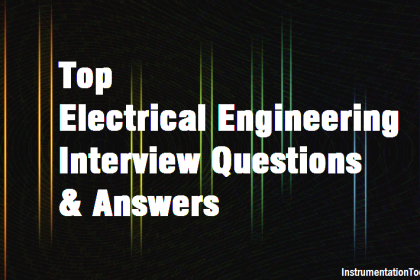
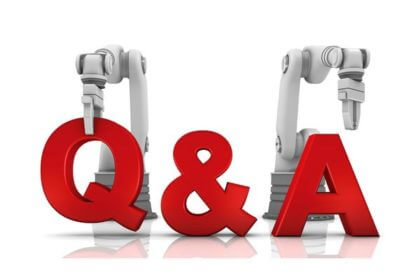
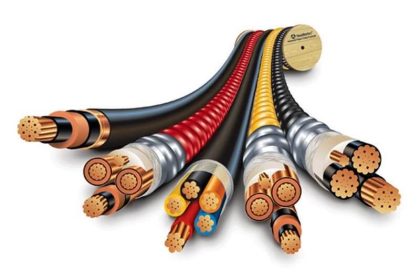
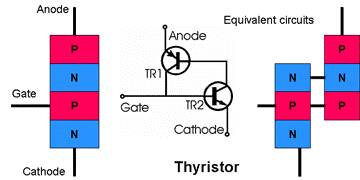



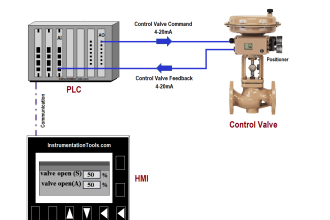
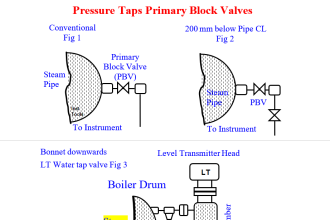

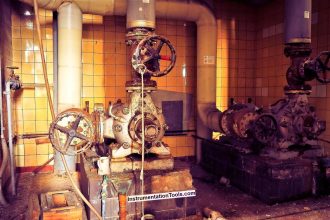
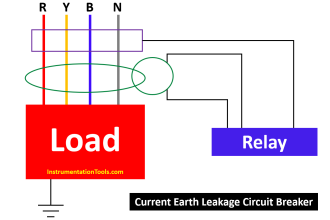
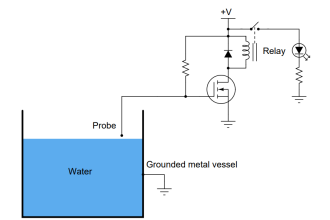
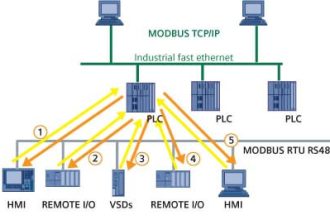


Seriously I value the insights and it’s very useful to me